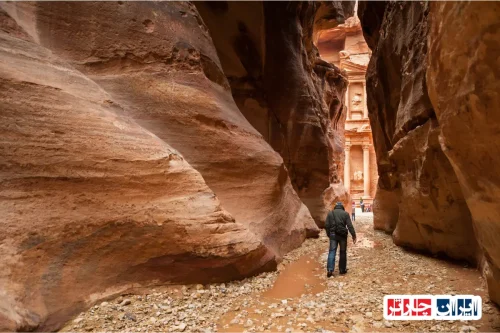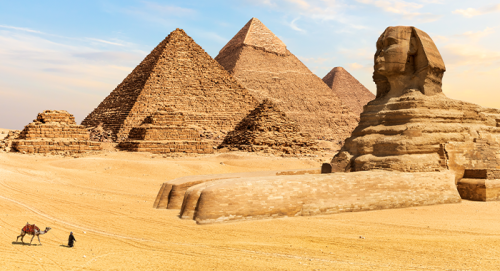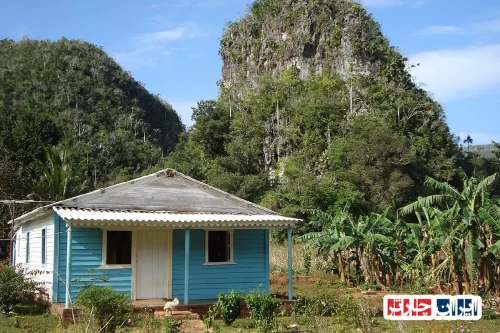Discover the Museum of Islamic Art Doha Qatar: A Treasure of Islamic Heritage and Art
Welcome to the Museum of Islamic Art-Iran Charter, a premier destination for enthusiasts of Islamic culture and history. Located in Doha, Qatar, this museum stands as a testament to the rich artistic and cultural heritage of the Islamic world. With its stunning architecture, extensive collection of artifacts, and engaging exhibitions, the Museum of Islamic Art Doha Qatar offers visitors an unparalleled journey through centuries of Islamic civilization. From ancient manuscripts and intricate ceramics to exquisite jewelry and calligraphy, the museum showcases the diversity and depth of Islamic art. Its strategic position in Doha makes it accessible for travelers seeking to explore the cultural tapestry of the Middle East. Whether you’re an art lover, historian, or curious traveler, the Museum of Islamic Art Doha Qatar provides a comprehensive experience that highlights the artistic achievements and cultural significance of Islam. The museum’s commitment to education and preservation ensures that future generations can appreciate the beauty and history of Islamic civilization. Visiting this iconic institution not only enriches your understanding of Islamic art but also fosters a deeper appreciation for the shared cultural heritage that unites the Muslim world. Plan your visit today to immerse yourself in the timeless beauty and profound history preserved within the Museum of Islamic Art Doha Qatar.
Discover the Rich History and Cultural Significance of the Museum of Islamic Art Doha Qatar
The Museum of Islamic Art in Doha Qatar stands as a testament to the rich heritage and artistic achievements of the Islamic world. Established with the vision to showcase the beauty and diversity of Islamic art, this iconic institution has become a focal point for cultural exchange and education. Its history dates back to the early 2000s when visionary leaders aimed to create a space that would preserve and promote Islamic artistic heritage on a global scale. Since its opening in 2008, the museum has attracted millions of visitors, offering a unique glimpse into centuries of Islamic civilization through its extensive collection of artifacts, manuscripts, textiles, and decorative arts. The museum’s founding was driven by a desire to foster understanding and appreciation of Islamic culture, making it a vital cultural landmark in Qatar and the world.
Architectural Excellence and Unique Design of the Museum of Islamic Art Doha Qatar
The architecture of the Museum of Islamic Art in Doha Qatar is a masterpiece that seamlessly blends modern design with traditional Islamic elements. Designed by renowned architect I. M. Pei, the building features a striking geometric form inspired by Islamic geometric patterns and motifs. Its iconic shape, resembling a ship or a lantern, symbolizes Qatar’s maritime history and cultural heritage. The use of natural materials such as limestone and the incorporation of water features and courtyards create a serene environment that enhances the visitor experience. Inside, the museum boasts spacious galleries with high ceilings, intricate tile work, and elegant lighting that highlight the exquisite artworks. The architectural design not only emphasizes aesthetic appeal but also promotes sustainability through energy-efficient systems, making it a pioneering example of contemporary Islamic architecture.
Practical Guide to Visiting the Museum of Islamic Art Doha Qatar: Hours, Directions, and Tips
Planning your visit to the Museum of Islamic Art in Doha Qatar is straightforward with clear information on opening hours and access routes. The museum is open daily from morning until evening, with the best times to visit being early mornings or late afternoons to avoid crowds. Visitors can reach the museum via public transportation, taxis, or personal vehicles, with ample parking available nearby. It is recommended to purchase tickets online in advance to save time and secure your preferred entry time. Inside, the museum features diverse sections including permanent galleries, temporary exhibitions, interactive zones, and educational workshops. Respectful behavior, such as refraining from touching artifacts and adhering to photography rules, ensures a respectful environment for all visitors. To enhance your experience, consider joining guided tours or audio guides that provide detailed insights into the exhibits. Don’t forget to explore the museum’s café and gift shop for souvenirs and refreshments, making your visit both educational and enjoyable.
Highlighting the Most Notable Collections and Artworks at the Museum of Islamic Art Doha Qatar
The Museum of Islamic Art in Doha Qatar houses an extraordinary collection that spans over 1,400 years of Islamic history. Its holdings include rare manuscripts, intricate ceramics, metalwork, textiles, jewelry, and calligraphy, representing diverse regions such as Persia, the Ottoman Empire, North Africa, and South Asia. Among the most prized pieces are exquisite Quranic pages, ancient astrolabes, and decorative tiles that exemplify the artistic mastery of Islamic artisans. The museum’s collection is carefully curated to showcase the evolution of Islamic art, from early Islamic periods to contemporary works. Temporary exhibitions often feature contemporary artists inspired by Islamic motifs, bridging tradition and modernity. These collections serve as a valuable resource for researchers, students, and art lovers, offering insights into the cultural and spiritual life of Islamic civilizations across centuries.
The Role of the Museum of Islamic Art Doha Qatar in Promoting Islamic Culture and Education
The Museum of Islamic Art in Doha Qatar plays a vital role in fostering cultural understanding and education about Islamic heritage. Through its diverse programs, it offers workshops, lectures, and seminars that explore Islamic art, history, and architecture. Educational initiatives target schools, universities, and the general public, aiming to inspire appreciation and knowledge of Islamic civilization. The museum also collaborates with international institutions to organize exhibitions, cultural exchanges, and research projects, further promoting dialogue and mutual understanding. Its outreach efforts include digital resources and online collections, making Islamic art accessible worldwide. By serving as a cultural hub, the museum actively contributes to preserving Islamic traditions while encouraging contemporary artistic expression. Visitors leave with a deeper understanding of the rich cultural tapestry that defines Islamic history and its ongoing influence today.
Innovative Interior Spaces and Interactive Exhibits at the Museum of Islamic Art Doha Qatar
The interior design of the Museum of Islamic Art in Doha Qatar emphasizes openness, light, and interaction. The galleries are spacious with flexible layouts, allowing for dynamic displays and immersive experiences. Interactive exhibits, multimedia presentations, and digital installations engage visitors of all ages, making learning about Islamic art both fun and informative. The museum features dedicated zones for children, featuring hands-on activities that introduce young visitors to Islamic calligraphy, patterns, and crafts. The use of natural light through large windows and skylights enhances the display of artworks, creating a welcoming atmosphere. The integration of technology and traditional design elements results in a harmonious environment that celebrates Islamic culture while embracing modern innovation. This approach ensures that visitors not only view artifacts but also experience the cultural narratives behind them.
Global Collaborations and International Partnerships of the Museum of Islamic Art Doha Qatar
The Museum of Islamic Art in Doha Qatar actively engages in international collaborations to enrich its collections and research capabilities. It partners with leading museums, universities, and cultural organizations worldwide to organize joint exhibitions, exchange programs, and scholarly conferences. These collaborations facilitate the loan of rare artifacts, joint research initiatives, and cultural dialogues that enhance the museum’s global stature. Such partnerships also support conservation efforts and the development of educational resources. By working with international institutions, the museum helps promote Islamic art on a global stage and fosters cross-cultural understanding. These strategic alliances ensure continuous growth, innovation, and the sharing of knowledge, positioning the museum as a key player in the international cultural landscape.
Upcoming Events, Exhibitions, and Cultural Programs at the Museum of Islamic Art Doha Qatar
The Museum of Islamic Art in Doha Qatar hosts a vibrant calendar of events throughout the year, including temporary exhibitions, cultural festivals, and educational workshops. Recent exhibitions have showcased Islamic calligraphy, textiles, and contemporary art inspired by Islamic themes. Special events such as lectures by renowned scholars, traditional music concerts, and craft workshops attract diverse audiences. These programs aim to deepen visitors’ understanding of Islamic culture and foster community engagement. The museum also organizes family-friendly activities and school programs to educate younger generations about Islamic heritage. Planning your visit around these events can provide a richer, more immersive experience, connecting visitors with the living traditions of Islamic art and culture. Stay updated through the museum’s official channels to not miss any upcoming highlights.
The Natural Surroundings and External Spaces of the Museum of Islamic Art Doha Qatar
The museum is situated in a picturesque location along Doha’s waterfront, offering stunning views of the Persian Gulf. Its outdoor spaces include beautifully landscaped gardens, walking paths, and viewing platforms that allow visitors to relax and enjoy the scenic surroundings. These external areas are designed to complement the architectural elegance of the building, featuring Islamic-inspired geometric patterns and water features. The outdoor spaces serve as venues for cultural events, open-air exhibitions, and leisure activities, making the museum a vibrant community hub. The proximity to the sea and city skyline creates a unique ambiance that enhances the visitor experience. Visitors can enjoy a peaceful stroll, take photographs, or simply unwind while appreciating the harmony between nature and Islamic art.
Future Developments and Innovative Projects at the Museum of Islamic Art Doha Qatar
The museum is committed to continuous growth through innovative projects and technological advancements. Future plans include expanding digital collections, incorporating virtual reality experiences, and developing interactive online platforms to reach a global audience. There is also a focus on sustainable architecture, with plans to implement eco-friendly systems and green building practices. New exhibition spaces and educational facilities are under consideration to accommodate growing visitor numbers and diverse programs. These initiatives aim to position the museum as a leader in cultural innovation, ensuring its relevance for future generations. By embracing technology and sustainability, the Museum of Islamic Art in Doha Qatar will continue to serve as a beacon of Islamic culture and a center for artistic excellence worldwide.
Frequently Asked Questions about the Museum of Islamic Art Doha Qatar
- What is the history of the Museum of Islamic Art in Doha?
- The Museum of Islamic Art in Doha was established in the early 2000s with the vision to showcase the rich heritage and artistic achievements of the Islamic world. Opened in 2008, it has become a prominent cultural landmark, attracting millions of visitors by presenting artifacts, manuscripts, textiles, and decorative arts from various Islamic civilizations spanning over 1,400 years.
- Who designed the Museum of Islamic Art in Doha?
- The museum was designed by the renowned architect I. M. Pei, whose innovative approach blended modern architecture with traditional Islamic motifs, resulting in a striking geometric structure inspired by Islamic patterns and maritime symbolism.
- What are the opening hours of the Museum of Islamic Art?
- The museum is open daily from morning until evening. It is recommended to visit early in the morning or late in the afternoon to avoid crowds. Check the official website for specific hours and any special holiday closures.
- How can I reach the Museum of Islamic Art in Doha?
- The museum is accessible via public transportation, taxis, or personal vehicles. There is ample parking nearby. Visitors can also use ride-sharing services or arrange guided tours for convenience.
- What are the main collections at the Museum of Islamic Art?
- The museum houses over 1,400 years of Islamic art, including rare manuscripts, ceramics, metalwork, textiles, jewelry, and calligraphy from Persia, the Ottoman Empire, North Africa, and South Asia. Notable pieces include Quranic pages, ancient astrolabes, and decorative tiles.
- Are there any special exhibitions or events at the museum?
- Yes, the museum hosts temporary exhibitions, cultural festivals, lectures, and workshops throughout the year. These events focus on Islamic calligraphy, textiles, contemporary art, and more, providing visitors with immersive cultural experiences.
- Does the museum offer guided tours or audio guides?
- Yes, guided tours and audio guides are available to enhance your visit. They provide detailed insights into the exhibits and the history behind Islamic art and architecture.
- What facilities are available inside the museum?
- The museum features spacious galleries, a café, a gift shop, and dedicated zones for children with interactive activities. It also offers educational workshops and seminars for visitors of all ages.
- Can I take photographs inside the museum?
- Photography is generally permitted in designated areas, but flash and tripods are usually prohibited to protect artifacts. Visitors should adhere to the museum’s photography rules to ensure a respectful environment.
- How does the Museum of Islamic Art promote Islamic culture and education?
- The museum organizes educational programs, workshops, and seminars that explore Islamic art, history, and architecture. It collaborates with international institutions and offers online resources to reach a global audience, fostering understanding and appreciation of Islamic heritage.
- What are the external features and surroundings of the museum?
- Located along Doha’s waterfront, the museum offers stunning views of the Persian Gulf. Its outdoor spaces include landscaped gardens, water features, and viewing platforms, making it a peaceful spot for relaxation and cultural events.
- Are there any future plans for the Museum of Islamic Art?
- Yes, future initiatives include expanding digital collections, incorporating virtual reality experiences, and developing sustainable architecture. The museum aims to enhance its educational and cultural offerings through innovative projects and international collaborations.
- How does the museum contribute to the global appreciation of Islamic art?
- Through international partnerships, exhibitions, and scholarly exchanges, the museum promotes Islamic art worldwide. It loans artifacts, hosts conferences, and shares research, positioning itself as a leading institution in preserving and showcasing Islamic cultural heritage.
- What makes the architecture of the Museum of Islamic Art unique?
- The building’s geometric design, inspired by Islamic motifs and maritime symbolism, combines modern aesthetics with traditional elements. Its use of natural materials, water features, and sustainable systems creates an iconic and environmentally friendly structure.
- What role does the museum play in promoting cultural exchange?
- The museum serves as a cultural hub by hosting international exhibitions, collaborating with global institutions, and organizing cultural events. It fosters dialogue and understanding among diverse communities through its programs and collections.






















